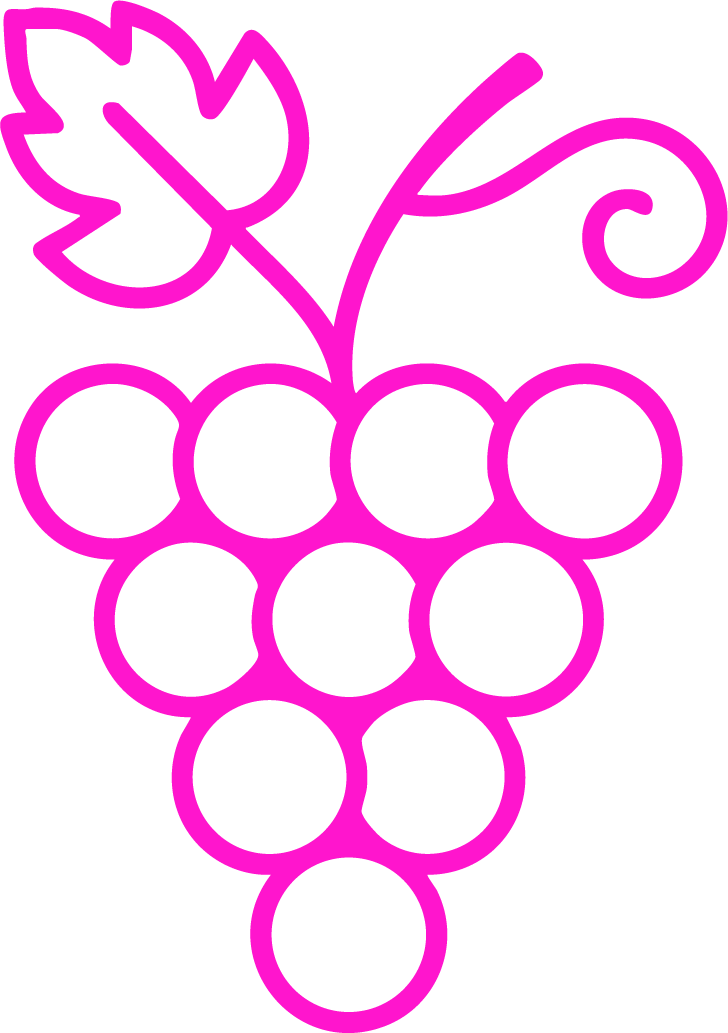Cabernet Sauvignon
🔊 Pronunciation: kab-er-nay saw-vin-yawn
🔍 Quick Summary
Cabernet Sauvignon is the world’s most famous red wine grape, known for bold structure, dark fruit flavors, and age-worthiness in both blends and single-varietal wines.
📜 History
Origin: Born in the 17th century near Bordeaux, France — a natural cross between Cabernet Franc and Sauvignon Blanc.
Discovered in Médoc vineyards for its thick skin, color, and disease resistance.
Rose to dominance in Left Bank Bordeaux for its structure and blending potential.
Global fame skyrocketed after the 1976 Judgment of Paris, when Napa Cabs shocked the world.
Global expansion – Now the most planted wine grape in the world, grown in over 60 countries.
🧠 What to Know
Cabernet’s appeal lies in its power, consistency, and ability to reflect place.
Thick skins = high tannins – Builds bold, structured wines with aging potential.
Classic flavors – Cassis, blackberry, cedar, mint, and sometimes green pepper (from pyrazines).
Oak loves Cab – French or American oak adds spice, vanilla, and polish.
Blending champ – Often combined with Merlot or Cabernet Franc for balance and nuance.
Wide style range – Cooler climates = herbal restraint; warmer = plush and ripe.
📍 Where It’s Found
🇫🇷 Bordeaux (Left Bank) – Gravel soils + maritime climate = structured, age-worthy blends with graphite and cassis
Moderate Maritime (55–75°F / 13–24°C)
🇺🇸 Napa Valley (Rutherford, Oakville) – Alluvial soils + warm sunshine = rich, ripe Cabs with velvety tannins
Warm Mediterranean (65–85°F / 18–29°C)
🇺🇸 Red Mountain (WA) – Sandy loam + intense sun = dense, powerful Cab with savory edge
Warm Continental (65–90°F / 18–32°C)
🇦🇺 Coonawarra (South Australia) – Terra rossa over limestone + maritime cooling = elegant Cab with blackcurrant, mint, and fine tannins
Cool-Mild Maritime (57–77°F / 14–25°C)
🇨🇱 Maipo Valley – Rocky foothills + cool Andes nights = focused Cab with herbal lift
Warm Mediterranean with cool nights (63–86°F / 17–30°C)
👅 Flavor & Style
Cabernet Sauvignon is intense and structured, offering flavors that evolve beautifully over time.
Color: Deep ruby to purple; nearly opaque
Aromas & Flavors:
Primary: Blackcurrant (cassis), blackberry, black cherry
Secondary: Cedar, tobacco, mint, green bell pepper, vanilla, smoke
Tertiary: Leather, cigar box, dried herbs, earthy truffle
Structure:
Body: Full
Tannin: High
Acidity: Medium to high
Alcohol: Medium-high to high (13.5–15.5%)
🛠 Winemaking Notes
Cabernet’s structure gives winemakers room to play with techniques that influence longevity and expression.
Extended maceration – Increases tannin and complexity, especially in premium bottlings.
New oak aging – Adds richness, spice, and a creamy texture to balance the firm tannins.
Micro-oxygenation – Modern technique to soften young Cabernets.
Cool climate restraint – Cooler sites often skip heavy oak to preserve freshness and herbal tones.
🍽 Food Pairing Ideas
Cabernet Sauvignon pairs well with protein-rich, flavorful dishes that match its tannic structure.
Savory: Ribeye steak, lamb shank, grilled mushrooms
Cheese: Aged Gouda, cheddar, blue cheese
Unexpected: Dark chocolate with sea salt, mole poblano, lentil stew with rosemary
🔗 Related Topics to Explore
🍇 Merlot – Cab’s blending buddy for softness and plum notes
🌍 Red Mountain – A Washington Cab hotspot
🌱 Gravel & Basalt Soils – Great drainage + mineral expression
⚗️ Oak Aging – Essential to Cab’s signature style







